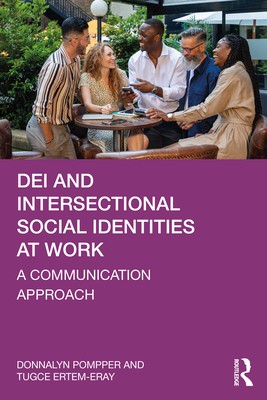
- We will send in 10–14 business days.
- Author: Donnalyn Pompper
- Publisher: Routledge
- ISBN-10: 103224528X
- ISBN-13: 9781032245287
- Format: 15.2 x 22.9 x 1.5 cm, softcover
- Language: English
- SAVE -10% with code: EXTRA
Dei and Intersectional Social Identities at Work (e-book) (used book) | bookbook.eu
Reviews
Description
This book equips readers--both students and communication practitioners--with the theoretical understanding and practical skills they need to support nonprofit and for-profit management to create and assess diversity, equity, inclusion (DEI), and social identity intersectionality goals in their organizations.
Through applied examples of the insider activist role that the communication function plays, the book helps future and current professional communicators navigate organizations toward authentic relationship-building with internal and external audiences. It teaches that embracing DEI includes acknowledging social identity intersectionalities--recognizing that people possess multiple social identity dimensions of age, culture, ethnicity/race, faith/spirituality, gender, physical/psychological ability, sexual orientation, social class, and more. In order to illuminate the theory discussed in the book, each chapter includes thought-provoking situation-conflict-opportunity sidebars, discussion questions for drilling deeper into the issues at hand, and case studies with applied lessons about DEI issues.
This is an ideal text for advanced undergraduates and graduate courses in organizational communication, strategic communication, marketing communication, human resources, and public relations, as well as for communication practitioners working in these subdisciplines.
EXTRA 10 % discount with code: EXTRA
The promotion ends in 17d.16:35:51
The discount code is valid when purchasing from 10 €. Discounts do not stack.
- Author: Donnalyn Pompper
- Publisher: Routledge
- ISBN-10: 103224528X
- ISBN-13: 9781032245287
- Format: 15.2 x 22.9 x 1.5 cm, softcover
- Language: English English
This book equips readers--both students and communication practitioners--with the theoretical understanding and practical skills they need to support nonprofit and for-profit management to create and assess diversity, equity, inclusion (DEI), and social identity intersectionality goals in their organizations.
Through applied examples of the insider activist role that the communication function plays, the book helps future and current professional communicators navigate organizations toward authentic relationship-building with internal and external audiences. It teaches that embracing DEI includes acknowledging social identity intersectionalities--recognizing that people possess multiple social identity dimensions of age, culture, ethnicity/race, faith/spirituality, gender, physical/psychological ability, sexual orientation, social class, and more. In order to illuminate the theory discussed in the book, each chapter includes thought-provoking situation-conflict-opportunity sidebars, discussion questions for drilling deeper into the issues at hand, and case studies with applied lessons about DEI issues.
This is an ideal text for advanced undergraduates and graduate courses in organizational communication, strategic communication, marketing communication, human resources, and public relations, as well as for communication practitioners working in these subdisciplines.


Reviews